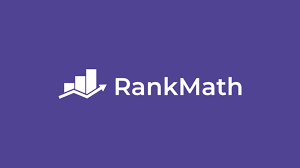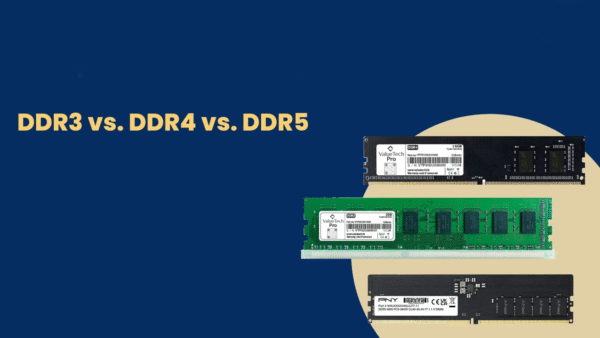Fiverr: The Marketplace That Democratized the Digital Economy
Introduction: From $5 Gigs to a Global Powerhouse
In the world of online freelance marketplaces, if Upwork is the formal job board and Toptal is the exclusive executive headhunter, then Fiverr is the vibrant, bustling, and sometimes chaotic digital souk. Founded in 2010 by Micha Kaufman and Shai Wininger, Fiverr began with a radical, almost laughably simple premise: a global marketplace where everything costs just five dollars. The name said it all.
The initial model was built on “gigs”—standardized, digital odd jobs like designing a logo, editing a video, or writing a short jingle, all offered for a flat rate of $5. Critics were skeptical. Yet, this seemingly simplistic idea tapped into a fundamental shift in the global economy: the commoditization of digital services and the rise of the micro-entrepreneur. Today, Fiverr has exploded far beyond its $5 roots to become a multi-billion-dollar publicly traded company (NYSE: FVRR), facilitating everything from quick tasks to complex, multi-thousand-dollar projects for millions of businesses and freelancers worldwide. This analysis explores the Fiverr phenomenon, its revolutionary model, its evolution, and its enduring impact on the future of work.
The Fiverr Model: Inverting the Traditional Marketplace
Fiverr’s genius lies in its inverted approach. Unlike platforms like Upwork, where clients post jobs and freelancers bid on them (a model akin to a traditional auction or job application process), Fiverr flipped the dynamic. Here, the service providers (sellers) are the ones who create the listings.
The Core Mechanics:
- Sellers Create “Gigs”: A seller pre-packages a service—a “gig”—with a clear title, description, pricing, and delivery timeline. This could be anything from “I will design a minimalist logo in 24 hours” to “I will develop a custom Shopify store with 20 products.”
- Buyers Browse and Buy: A buyer (typically a small business owner, entrepreneur, or marketer) searches for the service they need, compares gigs based on reviews, portfolios, and pricing, and makes an instant purchase. There is no bidding, no negotiation (unless using custom offers), and no waiting.
- Standardized Packages: Most gigs are structured in tiered packages:
- Basic: The essential service.
- Standard: Adds more features and faster delivery.
- Premium: The comprehensive, deluxe option.
This model cleverly upsells buyers and allows sellers to scale their income within a single listing.
This inversion created a powerful, e-commerce-like experience. Buying a freelance service has become as easy and predictable as buying a product on Amazon. This drastically reduced the “time-to-hire” from days or weeks to mere minutes, addressing a major pain point for time-poor small business owners.
The Evolution: From $5 to Enterprise
Fiverr’s journey is a masterclass in strategic scaling. The platform knew it could not survive on $5 gigs alone. Its evolution can be traced through several key phases:
- Moving Beyond $5: The first and most crucial step was allowing sellers to offer “gig extras.” A basic logo might be $5, but adding source files, multiple concepts, or a faster delivery timeframe would cost extra. This allowed talented sellers to earn a living wage and opened the door for more complex services.
- Fiverr Pro (2017): To shed its reputation for low-quality, budget services and compete for higher-value projects, Fiverr launched Fiverr Pro. This involved a rigorous manual vetting process to identify top-tier professionals with proven track records and exceptional portfolios. Fiverr Pro gigs command much higher prices, attracting a more discerning clientele while allowing the platform to move upmarket.
- Fiverr Business (2020): Recognizing that teams within larger companies were using the platform, Fiverr launched a dedicated experience for businesses. It includes tools for collaborative purchasing, user permission levels, and consolidated billing, making it easier for teams to manage their freelance spending and workflows.
- Acquisitions and Ecosystem Expansion: Fiverr aggressively expanded its capabilities beyond its core marketplace through acquisitions:
- Working Not Working (2021): A curated creative talent network, strengthening Fiverr’s high-end creative offerings.
- Slidebean (2021): A pitch deck startup, integrating presentation services directly into its ecosystem.
- Creative Live (2021): An online education platform, allowing Fiverr to offer learning resources to its community.
These moves signal a strategy to become an all-encompassing “everything services” and professional development hub.
The Fiverr Ecosystem: More Than a Marketplace
Fiverr is no longer just a transaction platform; it is a robust ecosystem designed to support every stage of a freelancer’s and client’s journey.
- Fiverr Studios: Allows a team of freelancers to collaborate and offer a combined, multi-skilled service (e.g., a video production studio offering scriptwriting, filming, and editing).
- Fiverr Learn: Offers online courses taught by top sellers, helping freelancers upgrade their skills and buyers to learn the basics.
- Fiverr Elevate: A program offering business perks and benefits (like accounting software and health insurance discounts) to its sellers, acknowledging the challenges of freelance life.
- And Co Acquisition (2018): Brought in invoicing and financial management tools, though this was later sunsetted and its features integrated. It demonstrated Fiverr’s ambition to provide back-office solutions.
The Value Proposition: Why It Works for Buyers and Sellers
For Buyers (Clients):
- Unbeatable Speed and Convenience: The instant-purchase model is Fiverr’s biggest advantage. For common, well-defined tasks, it’s the fastest way to get work done.
- Predictable Pricing: Buyers know the exact cost upfront, with no fear of hourly rates spiraling out of control. The tiered packages make budgeting easy.
- Massive Choice: With millions of gigs across hundreds of categories, buyers have an unparalleled selection of services at every price point.
- Low Risk: The platform’s robust rating and review system, coupled with a strong resolution center, provides buyer protection.
For Sellers (Freelancers):
- Built-in Demand Generation: Sellers don’t need to spend time writing proposals. A well-optimized gig can attract inbound leads 24/7, allowing sellers to focus on their work.
- Global Reach: A freelancer in a small town can instantly access a global clientele.
- Low Barrier to Entry: It is incredibly easy to start selling, making it a fantastic platform for beginners to build a portfolio and gain initial reviews.
- Productization of Services: The gig model forces sellers to think like entrepreneurs, packaging their skills into sellable products, which is a valuable business skill in itself.
Criticisms and Challenges
Fiverr’s model is not without its significant drawbacks:
- The Race to the Bottom: The ease of entry creates intense competition, often on price rather than quality. This can make it difficult for new sellers to stand out and can depress wages for certain services.
- High Fees: Fiverr takes a 20% commission on every transaction ($2 on the original $5 gig!), which is one of the highest in the industry. This cut is steep for sellers, especially on low-priced gigs.
- Buyer Misconduct and Unrealistic Expectations: The product-like model can lead some buyers to treat sellers like vending machines, expecting endless revisions and instant service for a minimal fee.
- Communication Barriers: The automated, text-based system can sometimes hinder the complex communication needed for sophisticated projects.
- Commoditization of Creativity: The platform can reduce complex, creative work to a mere commodity, undervaluing the strategic thinking behind services like branding.
Fiverr in 2025 and Beyond: The Future of the On-Demand Economy
Fiverr is perfectly positioned to capitalize on several key trends:
- The Mainstreaming of Freelance Work: As more professionals choose independent work, platforms like Fiverr will become the default infrastructure for finding clients.
- AI Integration: Fiverr is already using AI to improve search and matching. Future applications could include AI-assisted gig creation, automated project scoping, and even AI co-pilots for sellers to enhance their productivity.
- Vertical-Specific Expansion: While already vast, Fiverr could deepen its presence in specific high-value verticals like legal tech, healthcare marketing, or engineering, offering even more specialized talent and services.
- The “Super App” for Services: Fiverr’s acquisitions point towards a goal of becoming a single platform where a business can not only find freelancers but also educate its team, manage projects, and handle its finances.
Conclusion: The Democratizing Force
Fiverr’s story is one of audacious ambition and successful evolution. It transformed freelance work from a bespoke, negotiation-heavy service into a scalable, accessible product. While it faces valid criticisms over fees and commodification, its impact is undeniable.
It democratized access to the global digital economy. For a buyer, it provides instant access to a world of talent at the click of a button. For a seller, it provides a storefront to the world. It proved that there is a massive market for quick, efficient, and standardized digital services. Fiverr is no longer just a website; it is a verb, a cultural touchstone, and a fundamental pillar of the modern, on-demand gig economy. It may have started with five dollars, but its value and influence are immeasurable.











